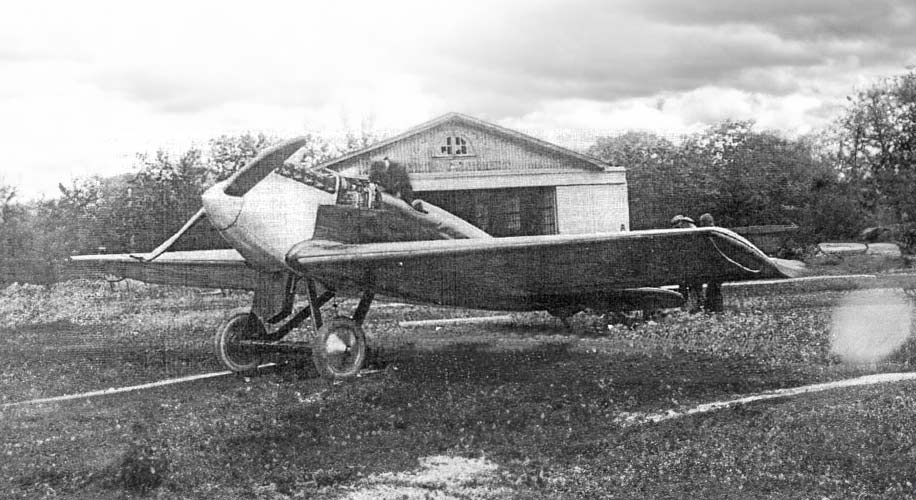IL-400b: Polikarpov’s 1920s Soviet monoplane, devised as an agile fighter with retractable gear and water-cooled V-12 engine. The Polikarpov IL-400b, a forerunner of the Soviet Union’s fighter aircraft fleet, was a product of post-World War I aviation innovation. It represented an ambitious attempt by the nascent Soviet aviation industry to create a modern fighter that could match or exceed the capabilities of contemporary Western designs.
In the realm of military aviation, the post-World War I era was marked by rapid technological advancements and the emergence of new air power doctrines. The Soviet Union, amidst its own political and industrial revolution, sought to establish a robust aerial fleet. Within this context, the Polikarpov IL-400b was developed to be at the forefront of Soviet fighter technology.
History of the Development of the Polikarpov IL-400b:
The Polikarpov IL-400b’s inception can be traced back to the early 1920s, a time when the newly formed Soviet Union was eager to showcase its technological prowess. The IL-400b was designed by Nikolai Polikarpov, a name that would later become synonymous with Soviet aviation. The aircraft was intended to fulfill the need for a high-performance fighter that could ensure air superiority for the Soviet Union. The project was launched by the Soviet government with the aim of developing an aircraft that could compete with, or even surpass, the fighters of Western powers.
The first flight of the IL-400b took place in 1923. The IL-400b was part of a broader effort by the Soviet Union to modernize its military forces and develop an indigenous industrial base capable of supporting such advancements. Although the aircraft did not receive a NATO nickname, as the system for NATO reporting names would not be established until decades later, the IL-400b represented a significant step in Soviet military aviation.
Polikarpov’s design philosophy was heavily influenced by the developments in Western aviation, but it also had to adapt to the unique challenges posed by the Soviet Union’s industrial capabilities and strategic needs. The IL-400b was to serve as a testbed for future designs and technologies that would eventually lead to more successful Soviet aircraft.
Design of the Polikarpov IL-400b:
The IL-400b was a single-seat, single-engine monoplane, a departure from the biplane configuration prevalent among most fighters of the time. This design choice was aimed at achieving higher speeds and better aerodynamic efficiency. The aircraft was primarily constructed of wood with a fabric covering, which was typical for the era but was beginning to be surpassed by metal structures in the West.
With a wingspan of around 37 feet (11.3 meters) and a length of approximately 23 feet (7 meters), the IL-400b was compact and sleek. One of its most innovative features was the retractable landing gear, a rarity at the time, which contributed to its streamlined profile and improved aerodynamic performance.
The advantages of the IL-400b’s design included a more modern silhouette that allowed for higher speeds and a reduced drag coefficient. However, the drawbacks were significant; the technology for reliable retractable gear was still in its infancy, which sometimes led to malfunctions. Additionally, the wooden construction could not match the durability and lifespan of the metal-framed aircraft that were beginning to dominate elsewhere.

Performance of the Polikarpov IL-400b:
The IL-400b was equipped with a water-cooled V-12 engine, which was capable of propelling the aircraft to speeds that were competitive for its time. Although specific figures regarding the IL-400b’s performance are sparse, comparable engines of the era could produce between 400 to 500 horsepower, allowing aircraft to reach speeds of up to 150 mph (240 km/h). The IL-400b’s range and service ceiling would have been in line with other early-1920s fighters, possibly achieving around 300 miles (480 kilometers) of range and a ceiling of approximately 20,000 feet (6,100 meters).
Compared to contemporaries like the American Curtiss PW-8 or the British Hawker Woodcock, the IL-400b would have offered similar performance. However, the unreliability of its landing gear and the limitations imposed by its construction materials meant it was less advanced in some respects than its Western counterparts.
Military Use and Combat of the Polikarpov IL-400b:
The IL-400b’s role as a military aircraft was primarily developmental, serving as a platform for testing concepts that would influence future Soviet designs. Its armament likely consisted of synchronized machine guns, typical of the period’s fighters. The aircraft did not see combat, as it was produced in limited numbers and was quickly overshadowed by subsequent designs from Polikarpov, including the successful I-5 and I-16 fighters.
Though it did not have a significant impact on the battlefield, the IL-400b played a crucial role in the evolution of Soviet military aviation. It did not experience the export success of later Polikarpov models and was eventually replaced by these more advanced and reliable designs. The IL-400b’s direct influence was short-lived, but its legacy endured in the lineage of Soviet fighters that followed.
The Polikarpov IL-400b was an ambitious project that sought to place Soviet fighter aircraft on equal footing with Western models. Despite its innovative aspects, the IL-400b was ultimately a transitional design, marking a stepping stone towards the development of more successful and influential Soviet fighters. Its contributions to Soviet aviation history lay not in its operational service but in the lessons learned and the technological paths it paved for future advancements.
Back to the Warbirds section.